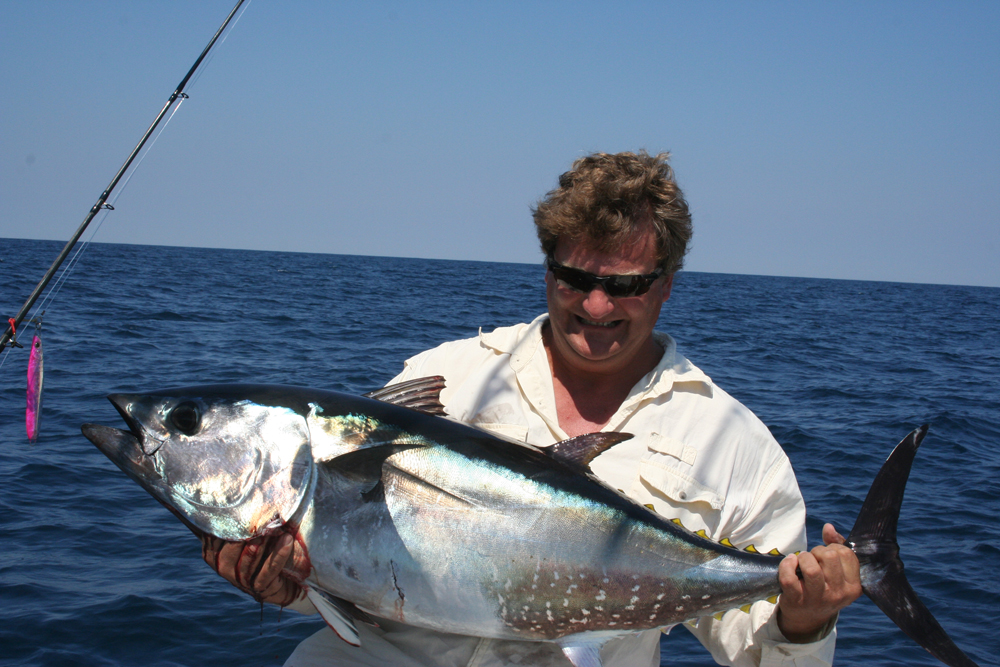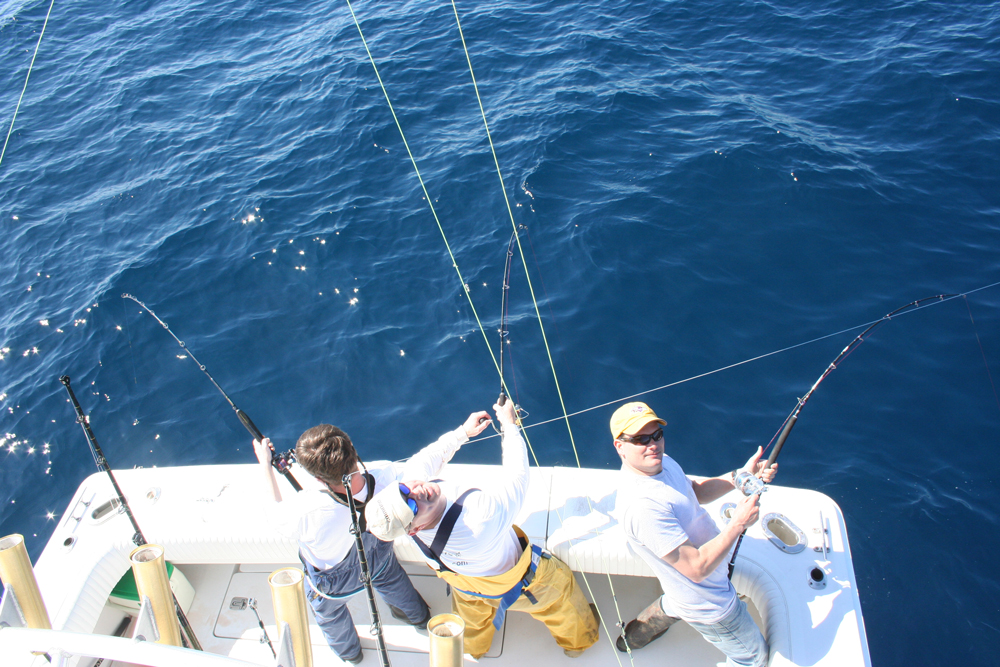You’re trolling for yellowfin tuna when you see fish on the meter, hanging 75’ deep just below the thermocline. You shift into neutral, crank in the lines, get your jigs over the side, and place them at a depth of exactly 90’. Then you lock up the reel, tuck the rod butt under your arm, and on the fourth turn of the handle, WHAM! Thank goodness you had a death-grip on that rod because now it’s doubled over and line is flying off the reel at Ludicrous Speed. Let ‘em run, you can’t stop the initial surge of a 100 pound-plus fish without breaking something. 150 yards of spectra later, he’ll calm down. Good. Now do the pump-and-crank, and bring that big boy in. Half an hour later the gaff strikes home and hot-damn boys, we’re going to be grilling tuna steaks for a month. Congratulations — you’ve just become addicted to speed jigging.

Just what separates speed jigging from other forms of jigging? The first difference is that there’s none of the sweep up/sweep down motion that we usually think of when jigging. Rather, it’s a drop, then reel-and-pump motion. Your hands are not used as a pivot point and the rod should remain on more or less the same vertical plane as you do the reel-and-pump. Both port and starboard hands lift up and drop down at the same time, with the right hand (assuming you’re a rightie) setting the pace by turning the crank. And that pace should be as quick as possible. Part of the reason speed jigging works is because the jig’s darting motion triggers a reaction strike from predators, and if you try and do it slowly the fish will react with a yawn. That’s why dedicated speed jigging reels are made with massive gears, featuring outrageously fast retrieve ratios.
Your left hand (supporting the rod) simply follows the same circular motion, at the same time as the right hand goes round and round. Since your left hand is supporting the rod, this causes it to lift vertically as opposed to pivoting on a diagonal axis, so the plane of the rod never goes above nine o’clock or below eight o’clock. Meanwhile, the rod butt is tucked into your arm pit; properly designed jigging rods have exceptionally long butts, for just this purpose.
Does this sound like a really weird way to “jig”? Yup. And at first this technique will feel really clumsy. But after an hour or so you’ll get the hang of it. And you’ll know you’ve got it perfect when the tip of your rod loads and unloads as you crank. Even though the rod is parallel to the water, this motion will cause the tip to bend deeply, then spring back to shape — and this is a great deal of what gives the speed jig the erratic motion that triggers strikes.

Wait a sec... there’s a lot of contradictory information out there on jigging, and many competent anglers speed jig in a manner that a speed jigging purist would call wrong — yet they catch the heck out of fish. While the above-outlined method is the basis for the Shimano Butterfly System, the bottom line is that none of us should really care about what is “correct,” as compared to what is effective. Our advice? Try using the “right” speed jigging retrieve but also try different rhythms, speeds, and retrieval styles, any of which could prove to be the most effective on any given day. Change, tweak, and experiment with what you’re doing as you fish for different species in different situations. In many cases, it’ll be a radical departure from the norm that fills the cooler.
Any time you find predatory fish that are schooled and suspended speed jigging is a killer tactic, and tunas hanging just below a thermocline are a prime example. Often a thermocline, the point at which two layers of differing water temperatures meet, will form in the inshore waters off the Mid Atlantic coast, somewhere between 60’ and 80’ down, in depths ranging from 100’ to 300’. Find a lump 20 to 50 miles off the beach within this depth range (think: Ham Bone, Hot Dog, Sausages, collectively known as the Oceanic Deli), and you’ve got a fair chance of locating tunas. Look closely at that depth finder, as you hunt for the fish. You see that thermocline? Good. Now turn into the seas and set up a search patt… wait a sec. Look at those red arches, hanging at 85’. Get those jigs over the side, fast!
Editor's Note: This article was originally published May 24, 2017, and was last updated May 8, 2024.